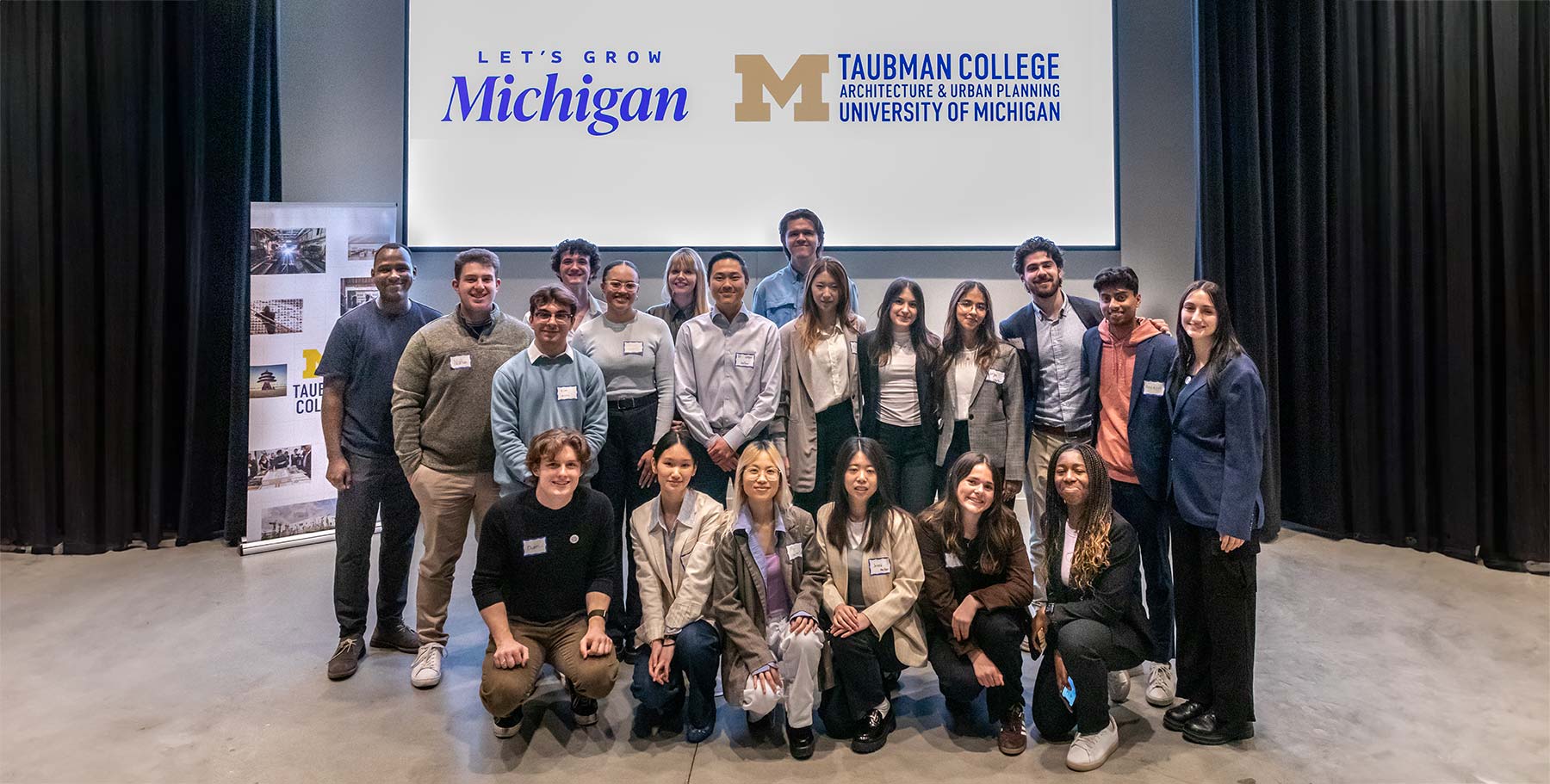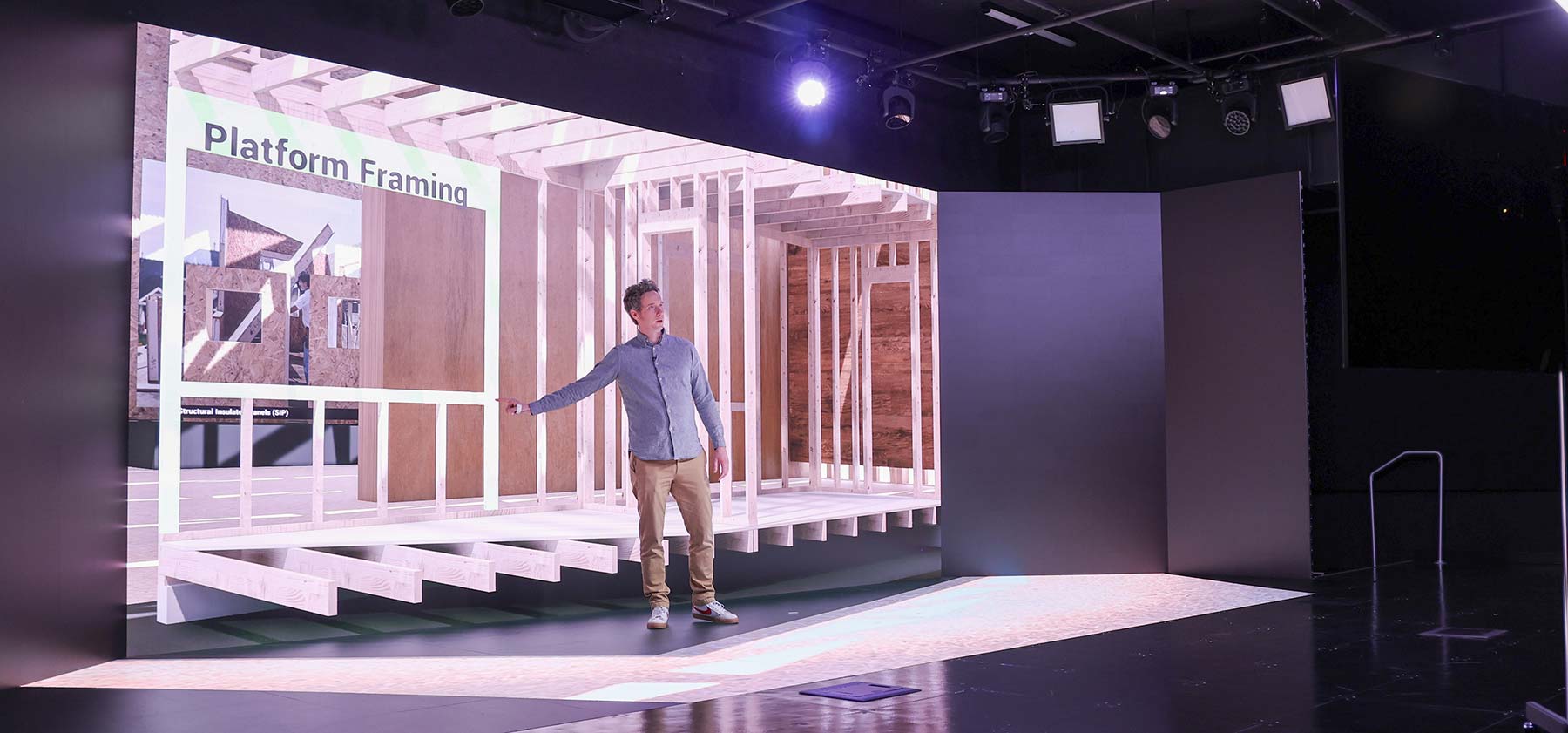In the face of rapid changes to technology, the climate, and the global economy, cities and regions are increasingly using scenario planning to prepare for an uncertain future. A new book by Robert Goodspeed, an assistant professor of urban and regional planning, explores this growing and evolving practice. Scenario Planning for Cities and Regions: Managing and Envisioning Uncertain Futures (Lincoln Institute of Land Policy, 2020) also offers the first in-depth examination of how urban planners and the communities they serve can make better decisions about the future.
A procedural tool originally developed for military and corporate strategic planning, scenario planning enables communities to create and analyze multiple plausible versions of the future. Unlike traditional approaches that begin with forecasting, scenario planning starts with a consideration of multiple plausible futures based on the different ways that major uncertainties could evolve.
Historically, the planning field has largely ignored uncertainty, resulting in plans that perpetuated the status quo rather than preparing residents for the future. Inflexible plans can lead to disaster, however: homes flooded because they were built in areas thought to be safe from storms, public funds wasted on infrastructure to accommodate overestimated growth, or expensive mismatches between affordable housing types and residents’ needs.
By contrast, scenario planning puts uncertainties at the heart of the process, prompting practitioners to examine key variables like changing climate and weather patterns, uncertain growth trends, and evolving housing preferences. With this focal shift, a city might implement strategies that contend directly with unknown levels of sea-level rise, that direct efforts to maximize housing affordability, or that use critical natural resources more equitably and sustainably.
When this analysis focuses on forces within the city itself, planners can explore not only what may change but also what could change to advance community goals—or as the result of other interventions. When participants focus on external uncertainties, they can better prepare for changes in the broader environment, improving resilience to uncertain but foreseeable events. Taken together, these investigations are how scenario planning helps cities to pursue practical transformation.
Scenario Planning for Cities and Regions examines how this tool can be adapted to a range of urban and regional planning contexts—and how it can empower practitioners and citizens alike to better address the unprecedented challenges that lie ahead for cities and regions. Intended for urban planners, students, and researchers, the book features practical guidance on scenario planning methods, modeling and simulation tools, and detailed case studies.
Goodspeed brings scenario planning to life with in-depth explorations of how planners and citizens have used the tool in their communities. Cases explored in the book include the Austin Sustainable Places Project, which used normative scenarios for low-budget, neighborhood-level land use planning in Texas, and the Sahuarita Exploratory Scenario Project, which employed exploratory scenarios to analyze an Arizona town’s general plan applied to possible futures. Although it focuses on U.S. cases, the book also describes international applications of scenario planning, including an ambitious Queensland, Australia, regional planning project, and covers foundational work by the Royal Dutch Shell company, which developed scenario creation methodology in the 1980s to analyze the global business environment.
Goodspeed also examines the history of both scenario and urban planning, showing how once-distinct fields can combine to create comprehensive long-range plans that account for a wide range of potential futures and build consensus among diverse stakeholders. He further demonstrates how scenario planning is uniquely suited to contemporary planning challenges and concludes, “Cities exist as they are, not as we wish they were, and scenario planning offers a good way to comprehend and plan them well.”
At Taubman College, Goodspeed teaches in the areas of geographic information systems (GIS), collaborative planning, and scenario planning theory and methods. His research investigates how new information technologies can be used to improve the planning process and planning outcomes, and involves mixed-methods studies of innovative urban planning practice, the use of GIS to develop novel methods, and theoretical analysis of sociotechnical practices like crowdfunding and smart cities. He was named a Leading Thinker in Urban Planning and Technology by the website Planetizen.
The Lincoln Institute of Land Policy seeks to improve quality of life through the effective use, taxation, and stewardship of land. A nonprofit private operating foundation whose origins date to 1946, the Lincoln Institute researches and recommends creative approaches to land as a solution to economic, social, and environmental challenges. Through education, training, publications, and events, we integrate theory and practice to inform public policy decisions worldwide.
To learn more or to order a copy of Scenario Planning for Cities and Regions: Managing and Envisioning Uncertain Futures by Robert Goodspeed, visit www.lincolninst.edu/publications/books/scenario-planning-cities-regions.





